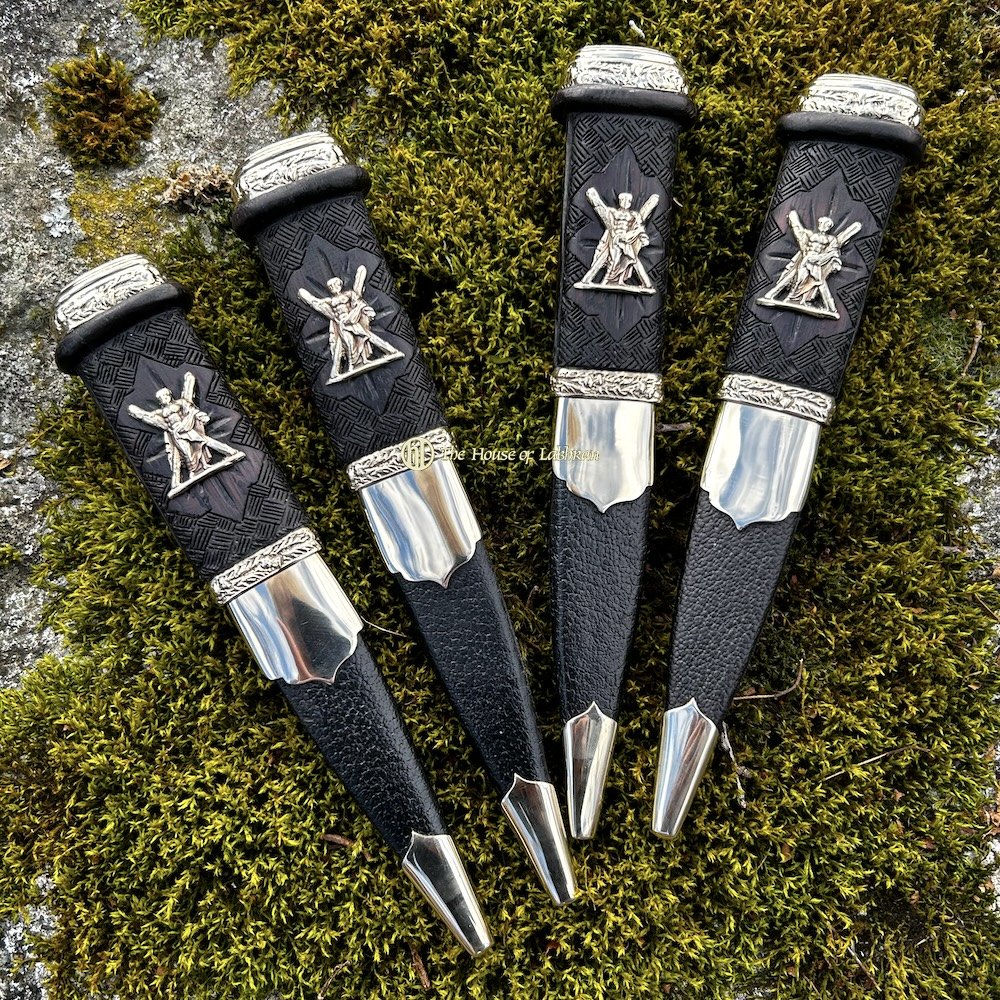Seaforth Highlanders Regimental Sgian Dubh
Seaforth Highlanders Brass Regimental Sgian Dubh – Hand crafted by our regimental silversmith, with solid brass Seaforth style St Andrew overlaying a hand carved star insignia.
The top thistle mount is stone set with a cairngorm style stone. The same pattern was used by 78th Highlanders Regiment of Foot in the 19th century and was then adopted by the newly formed Seaforth Highlanders in 1881.
Seaforth Highlanders Regimental Sgian Dubh
This sgian dubh we have based on an original antique sgian dubh circa 1900 and as worn by the regiment throughout WW1 and WW2.The 72nd Highlanders of Canada was formed in 1910, and they then became the Seaforth Highlanders of Canada regiment 1911. They also adopted the pattern from the Seaforth Highlanders of the Imperial service.
This is the first production for the regiment since 1961 and a heirloom quality sgian dubh.Hand crafted in Scotland and supplied to clients around the world The Seaforth Highlanders (The Duke of Albany’s and Ross-shire Buffs) was a historic line infantry regiment of the British Army, mainly associated with large areas of the northern Highlands of Scotland.When the regiment was formed in 1881 by merging the 72nd ( Duke of Albany’s Own Highlanders ) Regiment of Foot and the 78th Highlanders Regiment of Foot ( The Ross-shire Buffs ) they became the new unit’s 1st and 2nd Battalions respectively.
It was made the county regiment for seven northern Scottish counties, including the Orkney Islands.Both battalions were in India at the time of the merger, with 1st Battalion returning to Britain in 1882 and 2nd Battalion in 1895. In 1883 1st Battalion was posted to Parkhurst on the Isle of Wight and received new Colours the following year from Queen Victoria at Osborne House. Her son, Prince Leopold, the Duke of Albany, was made its colonel-in-chief.In 1898 1st Battalion was sent to the Sudan. A year later 2nd Battalion was sent to southern Africa to serve in the Boer War (1899-1902), fighting throughout the conflict. 1st Battalion moved to India in 1903 and stayed there until the outbreak of the First World War (1914-18), receiving new Colours from King George V during the 1911 Delhi Durbar.The regiment existed from 1881 to 1961, and saw service in World War I and World War II, along with many numerous smaller conflicts.
In 1961 the Cameron and Seaforth Highlanders were amalgamated to form The Queens Own Highlanders (Seaforth and Camerons). In 1994 the regiment was merged with The Gordon Highlanders to become The Highlanders. In 2006 The Highlanders became part of The Royal Regiment of Scotland and known as 4 SCOTS The Highlanders.
Seaforth Highlanders Regimental Sgian Dubh



